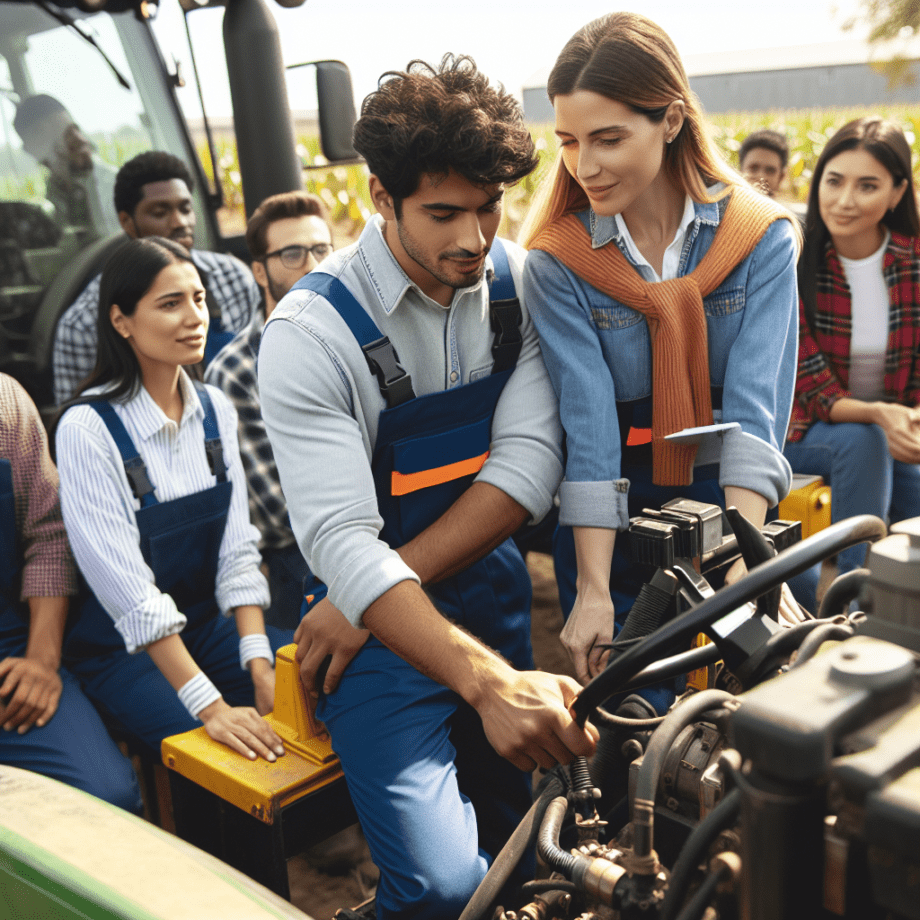Training new farm workers to safely operate tractors is a critical aspect of modern agricultural practices. Ensuring that employees are well-versed in the safe and efficient use of these powerful machines not only enhances productivity but also significantly reduces the risk of accidents and injuries. This article will explore the essential steps and best practices for training new farm workers in tractor operation, focusing on safety protocols, hands-on training, and continuous education.
Understanding Tractor Safety Protocols
Before new farm workers can begin operating tractors, it is imperative that they understand the fundamental safety protocols associated with these machines. Tractors are powerful and complex pieces of equipment that require a thorough understanding of their operation to prevent accidents. The following sections will outline the key safety protocols that should be included in any training program.
Personal Protective Equipment (PPE)
One of the first steps in ensuring tractor safety is the proper use of personal protective equipment (PPE). New farm workers should be trained to wear appropriate PPE, which may include:
- Helmets: To protect against head injuries in case of rollovers or falling objects.
- Safety glasses: To shield eyes from debris and dust.
- Gloves: To provide a better grip and protect hands from sharp objects and chemicals.
- Steel-toed boots: To protect feet from heavy objects and provide better traction.
- High-visibility clothing: To ensure that workers are easily seen by others on the farm.
Pre-Operation Checks
Before operating a tractor, new farm workers should be trained to perform a series of pre-operation checks. These checks are crucial for identifying potential issues that could lead to accidents or equipment failure. Key pre-operation checks include:
- Inspecting tires: Checking for proper inflation and any signs of damage or wear.
- Checking fluid levels: Ensuring that oil, coolant, and hydraulic fluids are at the correct levels.
- Examining the battery: Verifying that the battery is charged and terminals are clean.
- Testing lights and signals: Making sure that all lights and signals are functioning correctly.
- Reviewing the operator’s manual: Familiarizing oneself with the specific tractor’s controls and safety features.
Safe Operating Practices
Once the pre-operation checks are complete, new farm workers must be trained in safe operating practices. These practices are designed to minimize the risk of accidents and ensure efficient tractor use. Key safe operating practices include:
- Starting and stopping: Understanding the correct procedures for starting and stopping the tractor to prevent sudden movements.
- Speed control: Maintaining a safe and appropriate speed for the task at hand and the terrain.
- Turning and maneuvering: Using proper techniques for turning and maneuvering the tractor to avoid rollovers and collisions.
- Load management: Ensuring that loads are properly balanced and secured to prevent tipping.
- Communication: Using hand signals or radios to communicate with other workers and avoid misunderstandings.
Hands-On Training and Continuous Education
While understanding safety protocols is essential, hands-on training and continuous education are equally important for new farm workers. Practical experience and ongoing learning help reinforce safety practices and keep workers updated on the latest advancements in tractor technology and safety standards.
Supervised Hands-On Training
New farm workers should receive supervised hands-on training to gain practical experience in operating tractors. This training should be conducted by experienced operators who can provide guidance and feedback. Key components of hands-on training include:
- Basic operation: Learning how to start, stop, and maneuver the tractor under supervision.
- Implement attachment: Understanding how to safely attach and detach implements such as plows, mowers, and trailers.
- Fieldwork: Practicing tasks such as plowing, planting, and harvesting in a controlled environment.
- Emergency procedures: Training on how to respond to emergencies, such as equipment malfunctions or accidents.
Continuous Education and Refresher Courses
Tractor operation and safety standards are continually evolving, making continuous education and refresher courses essential for all farm workers. These courses help ensure that workers remain knowledgeable about the latest safety practices and technological advancements. Key aspects of continuous education include:
- Regular training sessions: Scheduling periodic training sessions to review safety protocols and introduce new techniques.
- Safety drills: Conducting safety drills to practice emergency procedures and improve response times.
- Technology updates: Keeping workers informed about new tractor models, features, and safety enhancements.
- Feedback and assessment: Providing opportunities for workers to give feedback on training programs and assess their own skills.
In conclusion, training new farm workers to safely operate tractors is a multifaceted process that requires a thorough understanding of safety protocols, hands-on experience, and continuous education. By implementing comprehensive training programs that emphasize these elements, farm managers can ensure that their workers are well-equipped to handle tractors safely and efficiently, ultimately leading to a safer and more productive agricultural environment.
